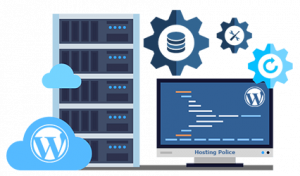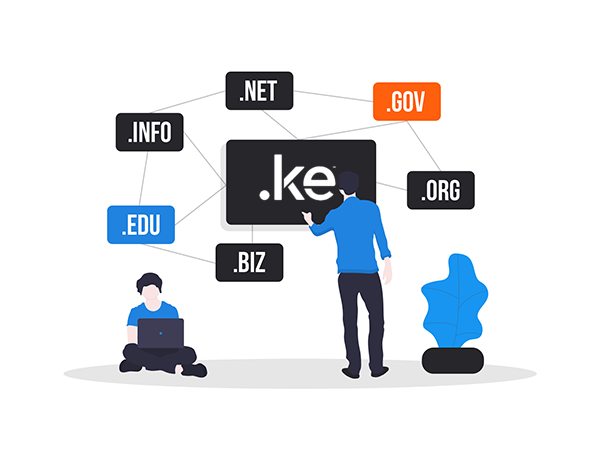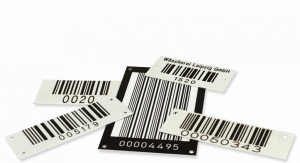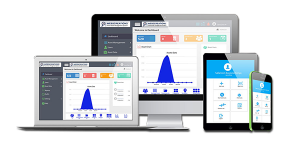Bounce rate is one of the most important, yet misunderstood metrics in Google Analytics. In this post, we’ll look at what sort of bounce rate you should be aiming for, and what to do if your website bounce rate is higher than this.
Topics we’ll cover:
- What is bounce rate?
- How to check your bounce rate in Google Analytics
- What should your bounce rate be?
- Why is your bounce rate so high?
- Are high bounce rates always bad?
- eCommerce and bounce rates
- How can you reduce your bounce rate?
What Is Bounce Rate?
Google’s own definition of bounce rate is: “The percentage of single-page sessions” (i.e. sessions in which the person left your site from the entrance page without interacting with the page).
The first half of this sentence is technically incorrect, because bounce rate is actually the percentage of single interaction visits to your website. But, for simplicity’s sake, we’ll stick with Google’s definition.
Here is an easy way to think of website bounce rate. Think of a ‘bounce’ as someone landing on your website, not clicking on any other pages and then leaving. The bounce rate is, therefore, the percentage of people that do this, rather than stay and take a look around your website.
How To Check Your Bounce Rate in Google Analytics
You can check your bounce rate inside Google Analytics, under Audience -> Overview

This is your website’s overall bounce rate, but your website actually has multiple bounce rates. The bounce rate of each page tells you the percentage of visitors that landed on that page and ‘bounced’ off. Plus, the bounce rate of each device tells you the percentage of people using mobiles, tablets and desktop computers bounced off, and so on. We’ll look at these different bounce rates later on, so, for now, let’s stick to the overall bounce rate.
What Should My Website Bounce Rate Be?
Your website bounce rate will depend on a number of factors, the key ones being:
The type of traffic you are attracting. Are the visitors to your website specifically looking for your company, or are they looking for information? People who are familiar with you will bounce less than those who are in information-gathering mode. If you’re an eCommerce store, does your traffic have high ‘commercial intent’ (i.e. are they in the mood to buy?), or are they simply researching future purchases?
The sources of your traffic. Visitors that come from Google search results tend to ‘bounce’ much less than visitors from Facebook, for example. People are in very different frames of mind when they’re in work or play modes.
The pages your visitors are landing on. Blog pages tend to have higher bounce rates than product or service pages, for example. If people are coming straight to your homepage, they should not be bouncing off. But if they are landing on an old blog post which doesn’t link to anything else on your website, you should expect a high bounce rate.
The design and layout of your website. Sites that are difficult to navigate, confusing, or look old-fashioned all tend to have higher bounce rates than new clean, easy-to-use, mobile friendly websites. Is your site something that people actually want to look at? If not, they will be leaving.
The clarity of your message. Is it immediately obvious what you do and who your target audience is? People are busy and distracted, so if they can’t find the answer they are looking for, they won’t hunt around to find it — they’ll leave. This is one of the most underrated causes of high bounce rates.
The speed and usability of your website. Slow-loading websites have high bounce rates and low conversion rates. It’s that simple.
As a very broad rule of thumb, you’re aiming for a website bounce rate of under 40%. Between 40% and 55% is usually okay, whilst 55-65% shows significant room for improvement. If your bounce rate is above 90% or below 20%, that often indicates a tracking or code installation error.
This is a very simple and broad rule of thumb, and there are certain circumstances where it might be perfectly okay to have a bounce rate higher than these figures.
Why Is My Bounce Rate So High?
If your bounce rate is above 40%, this might not be cause for alarm. We’ll look now at some legitimate reasons for a higher bounce rate, then we’ll address possible issues.
High Bounce Rate Legitimate Reason 1: Paid Or Social Traffic
If you pick up a high percentage of your traffic from social media or paid ads, this can affect your average bounce rate, as these visitors tend to have a higher bounce rate. In the example below, you’ll see that the bounce rates from paid search (row 4, 88%) and social (row 5, 70.98%) are much higher than from organic search (44.79%), direct traffic (39.76%) and referral traffic (37.83%).

Whilst it’s perfectly normal for paid search traffic to bounce at a higher rate than organic traffic, in this example, the bounce rate is exactly double. This indicates that the targeting of the ads needs to be looked at. Typically, either the ads are pulling in unqualified traffic (perhaps they are showing for phrases that aren’t relevant to the business), or the landing page is not doing a good job of turning the traffic into customers.
In the example below, we see a website with an average bounce rate of 75.33%. This appears to be a massive issue until we examine the traffic sources and see that, because a large percentage of the site’s traffic is coming from social media, the average bounce rate has been skewed. In actual fact, the bounce rate from organic search is 38%. A touch higher than we’d like (30-34%), but certainly not spurting blood.
The main goals for this site should be to:
- Figure out how to keep more of that social traffic longer (mobile responsiveness issues could be key here, see below)
- Work on attracting more organic traffic, as this is currently very low, yet providing the most qualified visitors and the highest number of contact conversions

This site’s high bounce rate from social skews the average bounce rate
Want some FREE help to reduce your website bounce rate?
If so, request a FREE marketing review from our expert Marketing Consultants. We’ll take a look at your site and your competitors, and suggest ways that you can decrease your website bounce rate and increase sales from your site. Oh, and did we mention it’s totally free of charge?
High Bounce Rate Legitimate Reason 2: Traffic Hitting Blog Posts
If you’ve been checking our site, you’ll know that writing really awesome blog posts can bring you lots of traffic. But, this traffic is often information seeking traffic, rather than visitors with high commercial intent. So, traffic to blog posts tends to have a higher bounce rate than traffic to your homepage, or other core pages on the site.
Below, we’ll see an example of an accountant’s site with a very good blog. This screen shows the relative bounce rates of the top site pages (white) compared to top blog posts (red). Notice how the bounce rate to the blog pages is very high (93%) compared to the main site pages. You might assume that this indicates the quality of the blog posts is not high, but if you look at ‘Avg. Time on Page’, you’ll notice that, on average, people are spending almost six minutes reading the second blog post.

The question in this scenario becomes how to keep this blog traffic on the site longer. One way to do this is to use lots of relevant internal links to other blog posts, so that the reader can delve deeper into a topic that interests them. Another way to keep these blog visitors on the site longer is to use a call to action at the end of the blog post (duplicated throughout) which is likely to appeal to them.
Remember that blog visitors will often have a lower commercial intent (i.e. they are in the research phase, rather than the buy phase), so it might not always be appropriate to pitch your product or service to them. Instead, consider offering a free mini-course which elaborates on the blog post, requiring their name and email address. Do you have an email list that they can sign up for? Is there a free trial or consultancy that you can offer them?
High Bounce Rate Legitimate Reason 3: Lots Of Mobile Traffic
Visitors on mobile devices bounce more, so if your website receives a high percentage of your traffic from mobile, this will affect your average bounce rate.

Notice how this site receives almost 65% of its traffic from mobile and tablet devices. You’ll also see how the traffic from mobile is bouncing at 53%, which brings the average bounce rate up to 44%.
This mobile bounce rate actually isn’t too bad at all, particularly considering the amount of social media traffic this site gets, so whilst the site owner can always look for more ways to make mobile traffic stick around longer, the reality is that they’re doing a pretty good job already. The desktop bounce rate of 30% is very healthy and shows that the traffic is qualified and the site is user-friendly.
With the number of people now using mobile to browse the web, Google is using this information for indexing. This means it’s more important than ever to make sure that your website looks seamless on a mobile device. Reduce your website bounce rate on mobile by giving the very best user experience on mobile.
Causes Of An Artificially High Or Low Bounce Rate
If your bounce rate is high due to one of the above reasons, then read on to find out how to reduce it and engage more of your traffic. Right now, we will briefly examine some not-so-healthy causes of an artificially high bounce rate.
Evil Cause Of An Artificially High Or Low Bounce Rate
1: Referral Or Bot Spam
Your website is frequently crawled by bots. Some are nice and friendly (Googlebot crawls your site to read your content and decide where to rank you), whilst others are mean and nasty (some bots are looking for content to scrape and put on spammy sites).
Sometimes, this bot activity is picked up by Google Analytics and can really skew your numbers, because bot traffic can often have a bounce rate of 0% or 100%.
Check out the example below, where you’ll see the average bounce rate for this eCommerce site is 27%. The referral traffic number seems a little high at 64%, bearing in mind that referral traffic is visitors that have landed on the site from a link on another site.

If we click on Referral traffic to examine it more closely, we see that a large proportion of this referral traffic is actually from two bots. You’ll notice the bounce rate of this traffic is very high because it’s not real visitors. This has skewed the referral traffic’s average bounce rate, and thus the site’s average bounce rate.

Cause Of An Artificially High Or Low Bounce Rate
2: Misconfiguration
Misconfiguration of Analytics can cause some very short-lived celebrations among st site owners delighted to find that a grand total of 0% of their visitors are bouncing off their websites. As they prepare to open a web design school and position themselves as the Mary Portas of the Internet, they realise that Analytics isn’t set up properly and what they’re seeing is less accurate than a politician’s memoirs.
Below is an example of a site with clearly misconfigured Analytics set up. Notice how the bounce rate is always either 100% or 0%?

Some common reasons for Analytics throwing up weird stats are multiple instances of Analytics installed on the same page, code conflicts, or the tracking code being installed in the wrong place (usually the footer).
If you’re seeing some unusual numbers in Analytics, get the Google Tag Assistant extension for Chrome and use it to diagnose the issue.
How To Improve Your Website’s Bounce Rate
Now that we know what sort of bounce rate we’re aiming for and we’ve established the most common causes of a high bounce rate, let’s look at some ways to reduce bounce rate and increase engagement with your website.
The easier visitors find it to use your site, the fewer of them will react with horror and bail. Improving your website’s usability should be a never-ending process of testing, monitoring stats and talking to customers. But, in the interest of giving you something to take away and apply immediately, let’s look at the most common bounce-reducing usability tricks:
Bounce Rate Reducer #1: Clear Navigation
Clear navigation gets people where they need to be, as quickly as possible and with minimum stress and thinking. Look at how the Bathstore.com website gives bath shoppers multiple ways to narrow their selection of baths. Their menu is like a helpful sales person asking: “Do you know what type of bath you are after? No? Okay. Then do you know what style the bathroom is? No? Okay. Then would you like to take a look at all our baths? No? Okay. Then would you like to see a buyers guide to help you choose?” With each option, this awesome navigation guides the lost and confused visitor effortlessly closer to the purchase.
Credit to Exposure Ninja









